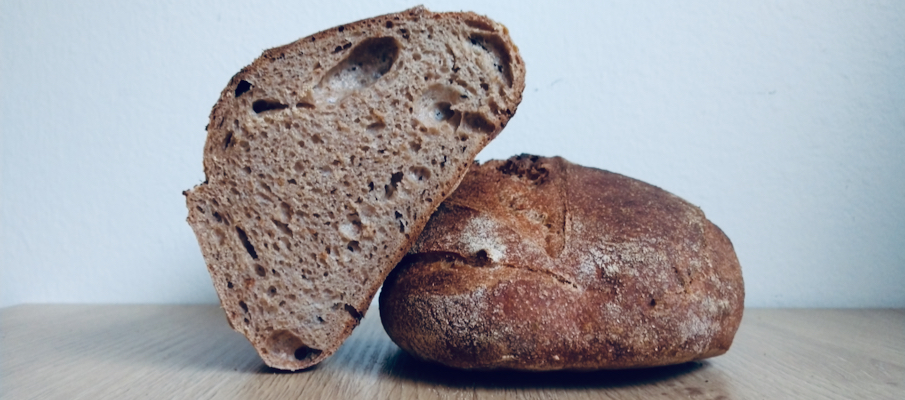What is actually healthy? There is so much information about the health benefits of our food, some of it contradictory, I get quite confused sometimes.
I do have some answers though: For bread, healthy means whole grain flour compared to refined white flour. Whole grain flour, such as whole wheat or whole rye, has all its original components which include lots of healthy vitamins, minerals, and fiber.
White flour is the flour after the bran and the germ are removed and only the starchy part is left. You get beautifully white and fine flour that is great for creating an extra light texture in bread and pastries. Also, since you are left with mostly starch, is fairly neutral in flavor, which is especially good for pastries to enhance the delicate flavors of butter, vanilla, cinnamon, etc.
The sad thing about white flour is that it has lost most of its nutritional value and flavor (if you like flavor it is sad). Typically white flour is enriched, which means some of the key nutrients that are lost when whole grains are milled into white flour are added back into the flour. This is very important for everyone eating a lot of white bread, which afterall is the highest selling bread in the US. But just because nutrients are added, doesn’t mean you get the same health benefits. Typically these nutrients are synthetically made and may not represent all nutrients lost, specifically fiber, and comprise only the nutrients we know of or think matter.
The best, and as I think tastiest way to get your essential nutrients, when eating bread, is looking for breads that are made with whole grain flours. I love the unique flavors that whole grains give to bread.
But if you are reluctant to get a bread with 100% whole grain flour, choosing a bread that has some whole grains is better than having no whole grain at all. I know, it can be hard changing your eating habits, but you may get used to new or different tastes and textures quicker than you think. Some years ago, my better half had to change his diet to avoid saturated fat, so out was whole milk, in was skim milk. I was never a big milk drinker but the occasional bowl of cereal or glass of milk was not very enjoyable after the switch. However, after a surprisingly short time, I didn’t mind the skim milk anymore. I was rather shocked that I was losing my “good” taste (for rich and flavorful whole milk) and adjusting to “nasty” things (bland and watery skim milk). Skim milk just started tasting like milk, like I had always had it. This is how flexible we can be with our tastes and preferences. Kind of amazing.
So, if you want to add some whole wheat into your bread, my Country Sourdough is 38% whole wheat. All of my other bread options have more. You can go even as far as 100% whole wheat in my Whole Wheat 100 Sourdough bread.

